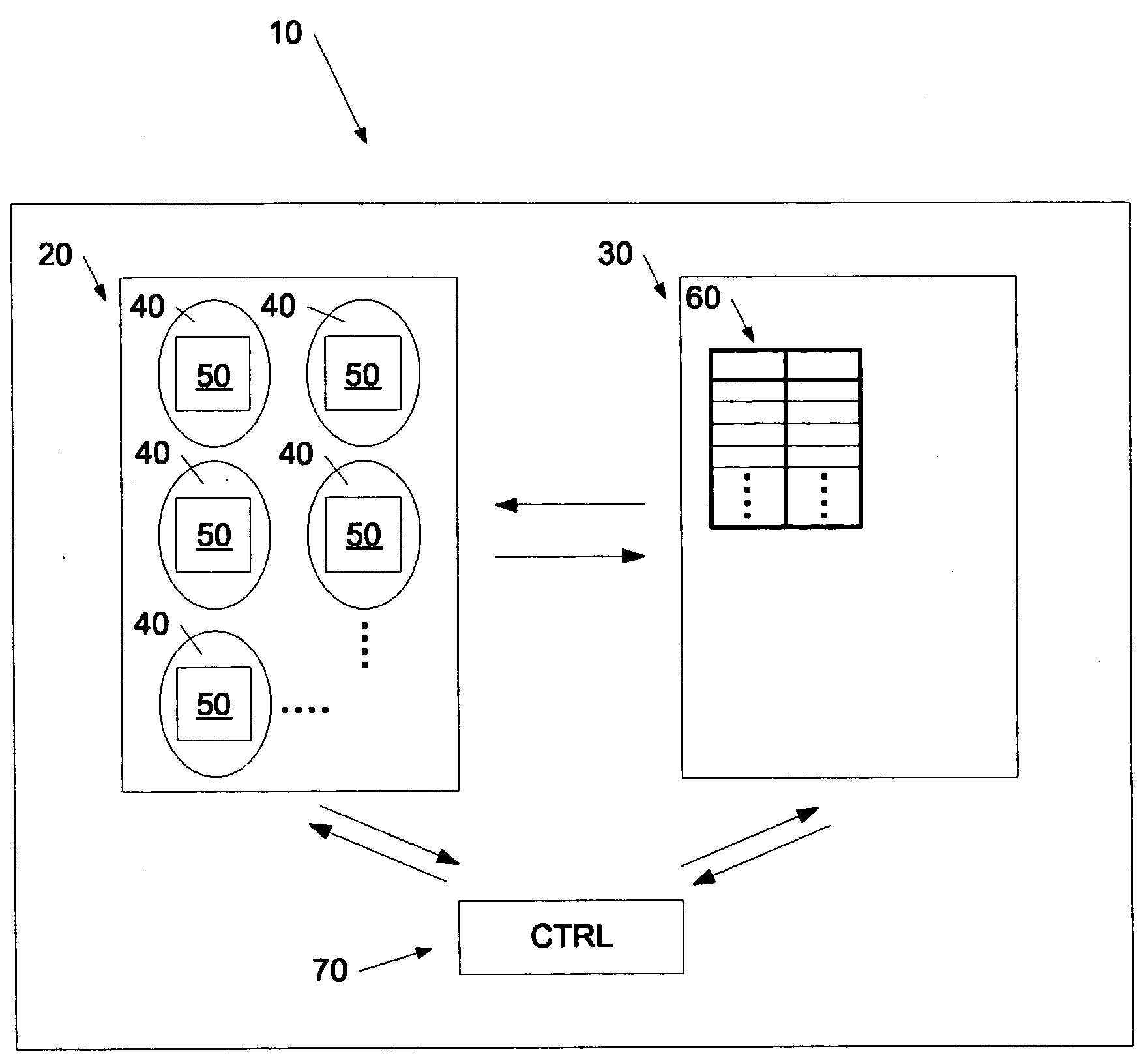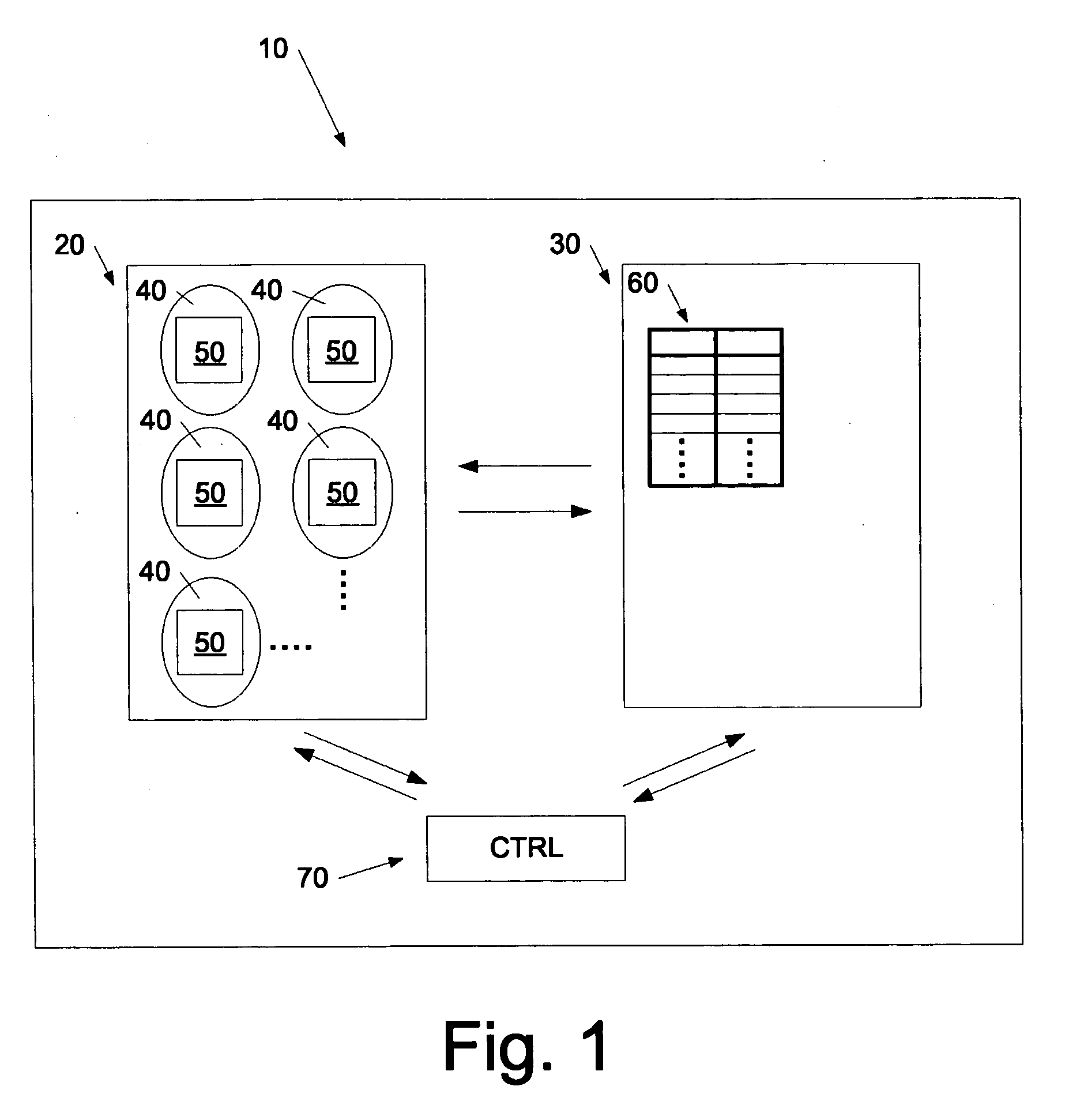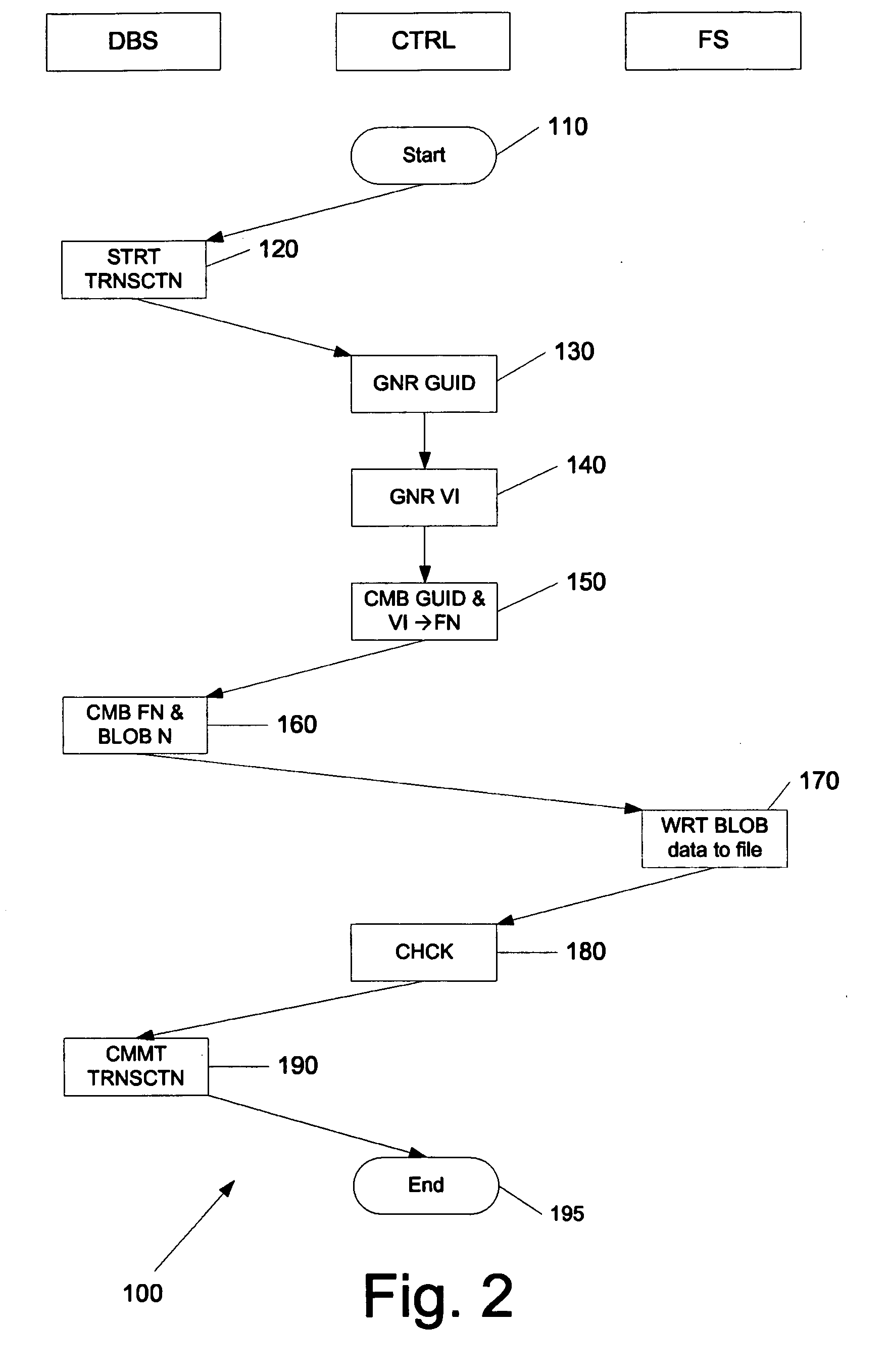System and method for managing binary large objects
a technology for managing systems and large objects, applied in the field of systems for managing binary large objects, can solve the problems of not being able to meet acid requirements, not being able to optimize for operating on sets of large files, and not being able to support transactions on blobs
- Summary
- Abstract
- Description
- Claims
- Application Information
AI Technical Summary
Benefits of technology
Problems solved by technology
Method used
Image
Examples
Embodiment Construction
[0037]FIG. 1 is a very schematic representation of the system 10 according to the invention. The system 10 comprises a file subsystem 20, a database subsystem 30 and a controller 70. In the file subsystem 20, a plurality of files 40 is shown, each having a file name (not shown). In FIG. 1 each file 40 comprises a BLOB 50, each of which has a BLOB name (not shown). The database subsystem 30 comprises a table 60 with two columns. One column of the table 60 could contain the BLOB names and the other could contain the file names.
[0038]The controller 70 is a data processing component in the system 10 controlling initiation of operations performed in the file subsystem 20 and the database subsystem 30. Moreover, the controller 70 is arranged to control communication or information exchange between the controller 70 and the file subsystem 20 and / or the database subsystem 30 (which is shown by the slanting arrows).
[0039]The horizontal arrows between the file subsystem 20 and the database su...
PUM
 Login to View More
Login to View More Abstract
Description
Claims
Application Information
 Login to View More
Login to View More - R&D
- Intellectual Property
- Life Sciences
- Materials
- Tech Scout
- Unparalleled Data Quality
- Higher Quality Content
- 60% Fewer Hallucinations
Browse by: Latest US Patents, China's latest patents, Technical Efficacy Thesaurus, Application Domain, Technology Topic, Popular Technical Reports.
© 2025 PatSnap. All rights reserved.Legal|Privacy policy|Modern Slavery Act Transparency Statement|Sitemap|About US| Contact US: help@patsnap.com



